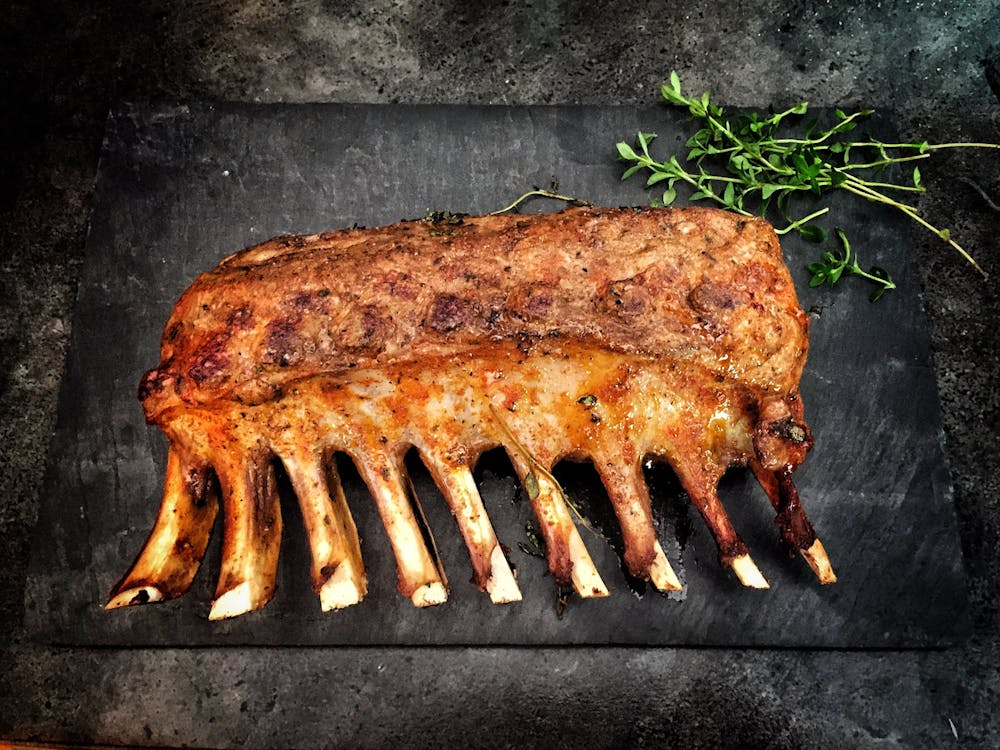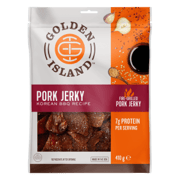
Australia's summer air often carried the smell of sizzling lamb on the barbie, signalling long-awaited weekends and family gatherings.
But this year, the aroma may come with a price tag that leaves wallets lighter than usual.
With the national flock shrinking, meat lovers are bracing for sticker shock at their local butcher and supermarket.
The national sheep flock had fallen 6.2 per cent to 74.2 million head, marking a particularly challenging period for farmers.
'A lot of this decline that we're witnessing is because we're seeing varied climate outcomes, particularly in those key sheep-producing regions. So when you look at South Australia, Victoria, they faced really dry conditions for the last 12 to 18 months.'
The term 'turn off' might sound gentle, but it represented heartbreaking decisions for families forced to sell livestock early to avoid crushing feed costs during drought.
Two years of heavy flock liquidation, combined with tough seasonal conditions across southern Australia, had contributed to a marked shortage of lambs expected to continue well into the year.
Shoppers often did not realise that retail beef and lamb prices typically lagged livestock saleyard prices by around eight months, meaning the full impact had yet to hit supermarket shelves.
Consumer expert Gary Mortimer warned that meat and fresh produce categories would see the highest price fluctuations.
'These foods are highly sensitive to supply and demand conditions. Even a temporary decline in supply can push prices up until supply returns to normal.'
The price shock in perspective
Since 2000, chicken prices had risen 36 per cent, beef by 146 per cent, but lamb had skyrocketed by 182 per cent.
Over the past decade alone, farm gate lamb prices increased 84 per cent while retail prices rose 30 per cent—showing there was still room for further supermarket price increases.
Regional Differences in Price Impact
Not all states felt the pinch equally, with Western Australian lamb prices lagging eastern states for much of the year.
However, they began to move on par with east coast slaughter values as available numbers tightened.
South Australia and western Victoria bore the brunt of the dry conditions, forcing early decisions that rippled through the supply chain.
Lower grain values and firm slaughter lamb prices had improved lamb feeding margins, increasing demand for light and store lambs from feedlots.
Budget impact for households
- Lamb prices up 20 per cent since December 2023
- Retail prices typically lag farm prices by 8 months
- Chicken remains 146 per cent cheaper than lamb over the long term
- Recovery not expected until 2026-2027
A family spending $50 weekly on lamb would see their annual meat bill increase by $520 based on current trends, putting significant strain on pensioners and those on fixed incomes.
The industry outlook offered hope, but patience would be required.
Meat & Livestock Australia's forecast showed lamb slaughter dropping by about 1.4 million head next year, supporting prices in 2025.
Flock Recovery and Smart Shopping
Emily Tan explained the biological reality of flock recovery: 'When you've got a breeding ewe, you can get two lambs, and then you might set aside some female lambs and then make them ewes, and then that's a natural increase.'
She estimated it might take a couple of years for flock numbers to return to pre-2025 levels.
The MLA projected the national flock could grow by 2.1 per cent in 2026 and a further 4.3 per cent by 2027, reaching 78.9 million head.
Lamb production was expected to rebound to 651,000 tonnes, supported by grain feeding systems that maintained heavier carcase weights.
While waiting for prices to stabilise, Australians could employ smart shopping strategies to enjoy quality protein without breaking the bank.
Comparing prices across state borders could be worthwhile, as Western Australian prices had lagged eastern states.
Timing purchases carefully helped, as major supermarkets used forward contracts that provided supply certainty but slowed price reflection.
Exploring alternative cuts allowed households to enjoy lamb without paying premium prices, and bulk buying offered a way to store portions for later use.
Higher value export markets in North America, Asia, and Europe were taking an increased proportion of volumes, supporting Australian farmers but raising domestic competition.
Despite challenges, Australia maintained its reputation for quality.
'Global supply is tightening, and Australia is in a strong position to meet demand. Our reputation for quality and consistency continues to underpin export growth, particularly in premium markets.'
The situation reflected broader challenges facing Australian agriculture—from climate variability to global market pressures—adding another chapter to the story of farming resilience.
As summer approached and Australians prepared their BBQs, lamb might be harder to find and costlier to buy, but the industry's commitment to quality remained unchanged.
What This Means For You
Australia's national sheep flock had dropped 6.2 per cent to 74.2 million head due to prolonged dry conditions, putting pressure on lamb supply across the country.
Retail lamb prices typically lagged farm gate prices by around eight months, meaning shoppers may still see further increases in the months ahead.
While Western Australia had experienced lower price pressure compared with the eastern states, the gaps were beginning to close as supply tightened.
Industry forecasts were cautiously optimistic, projecting flock recovery by 2026-2027.
For households, this meant planning ahead was more important than ever—budgeting for weekly meals, considering alternative cuts, or adjusting shopping habits could help manage the rising cost of one of Australia’s favourite proteins.
If the rising cost of lamb at the supermarket has caught your attention, there’s a story that shows just how steep the increase has been for certain cuts.
It dives into real examples from stores where prices have nearly doubled, highlighting the impact of drought conditions on meat availability.
This piece offers a closer look at what’s happening on the shelves and what shoppers can expect in the coming months.
Read more: Legs of lamb almost double in price at supermarkets amid drought
Lamb prices and hogget supply — Current lamb prices have surged nearly 20 per cent since December 2023, reflecting a volatile and reactive market.
https://www.mla.com.au/news-and-events/industry-news/lamb-prices-and-hogget-supply/
Plenty left in the price tanks for lambs in 2025? — Prices have reached the second strongest levels on record for this time of year, highlighting high demand and limited supply.
https://mecardo.com.au/plenty-left-in-the-price-tanks-for-lambs-in-2025/
Prices & Markets | Meat & Livestock Australia — Australia's national sheep flock has dropped 6.2 per cent to 74.2 million head, impacting overall lamb availability.
https://www.mla.com.au/prices-markets/
Latest sheep market update — Two years of heavy flock liquidation combined with tough seasonal conditions across major lamb producing areas in southern Australia have contributed to a marked shortage of lambs.
https://elders.com.au/for-farmers/market-insights/latest-sheep-market-update/
Livestock prices—DAFF — The average retail price of beef and lamb typically lags livestock saleyard prices by around eight months, delaying the full impact on supermarkets.
https://www.agriculture.gov.au/abares/research-topics/agricultural-outlook/livestock-prices
Latest sheep market update — Western Australian lamb prices have been lagging the eastern states for much of the year but are now moving on par with east coast slaughter values as supply tightens.
https://elders.com.au/for-farmers/market-insights/latest-sheep-market-update/
Latest sheep market update — Significantly lower grain values and firm slaughter lamb prices have improved lamb feeding margins, increasing demand for light and store lambs from feedlots.
https://elders.com.au/for-farmers/market-insights/latest-sheep-market-update/
Plenty left in the price tanks for lambs in 2025? — Meat & Livestock Australia's latest forecast shows lamb slaughter dropping by about 1.4 million head next year, supporting higher prices.
https://mecardo.com.au/plenty-left-in-the-price-tanks-for-lambs-in-2025/
Latest sheep market update — Higher value markets through North America, Asia and Europe are taking an increased proportion of export volumes, suggesting higher per tonne lamb export returns in 2025.
https://elders.com.au/for-farmers/market-insights/latest-sheep-market-update/
What strategies are you using to manage rising meat costs, and have you noticed significant price increases at your local supermarket?







